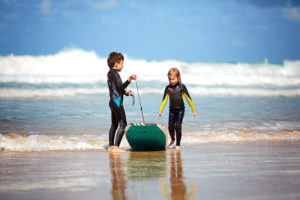As the seasons change and summer begins there is a significant adjustment to family’s schedules. School lets out, regular routines are discontinued and other activities take their place. Fun in the sun, vacations, special trips, summer camps and some long lazy days without any expectations are cherished events of summer for most.
While the world around them embarks into the joys of summer, families with children with autism may find themselves experiencing some struggles and an initial escalation in their child’s expression of anxiety and discontent.
Why would these children become more anxious? Summer activities are often those the children enjoy and there may be more free time for the children to play at length with preferred toys. So I ask again, Why do children enter summer with more anxiety than joy?
The answer can be found in how the children relate to their environment and understand their routines. Since children with autism struggle with understanding verbal language, social skills, and unpredictable encounters they develop self-selected rules about their lives. Regular routines are a comfort to them as the children can predict what the expectations and activities will be. With the changing schedules of summer children with autism find that the self-selected rules they have come to count on are no longer serving them. The routine of getting up, eating breakfast, getting dressed and getting on the bus for school has been disrupted. Now the family is first dressing for the beach, getting in the car, and eating breakfast out at a restaurant. Children with autism have no way to understand why their parents have confused them by changing the rules and this results in anxiety.
Thankfully a little planning and purposeful engagement can help. Below are six suggestions for helping children with autism manage the changes of routine and unpredictable activities of summer.
-
Using visual supports such as picture schedules to communicate the events of the day.
-
Planning extra time for transitions so the adults can remain calm while supporting the needs of the child.
-
When possible keep as many parts of the old routine in place. Such as get up, eat breakfast, get dressed then get in the car to go to the beach. The first 3 parts of this routine are consistent and even the “getting in a vehicle” to go to the next activity is consistent. The only change is the car vs. the bus.
-
Preparing a bag of preferred toys that calm your child and using these items to focus the child while in the car or waiting for activities to start. But, leave them in the bag hidden away when there are other activities to engage your child. This will allow your child to be excited to play with these special toys during those potentially difficult transitions.
-
Understand that your child might exhibit more self-stimulatory behaviors such as hand flapping as coping mechanisms and allow for behaviors that are not disruptive or destructive.
-
Use positive expectation, “to do” language and “first/then,” expressions to communicate clearly.




